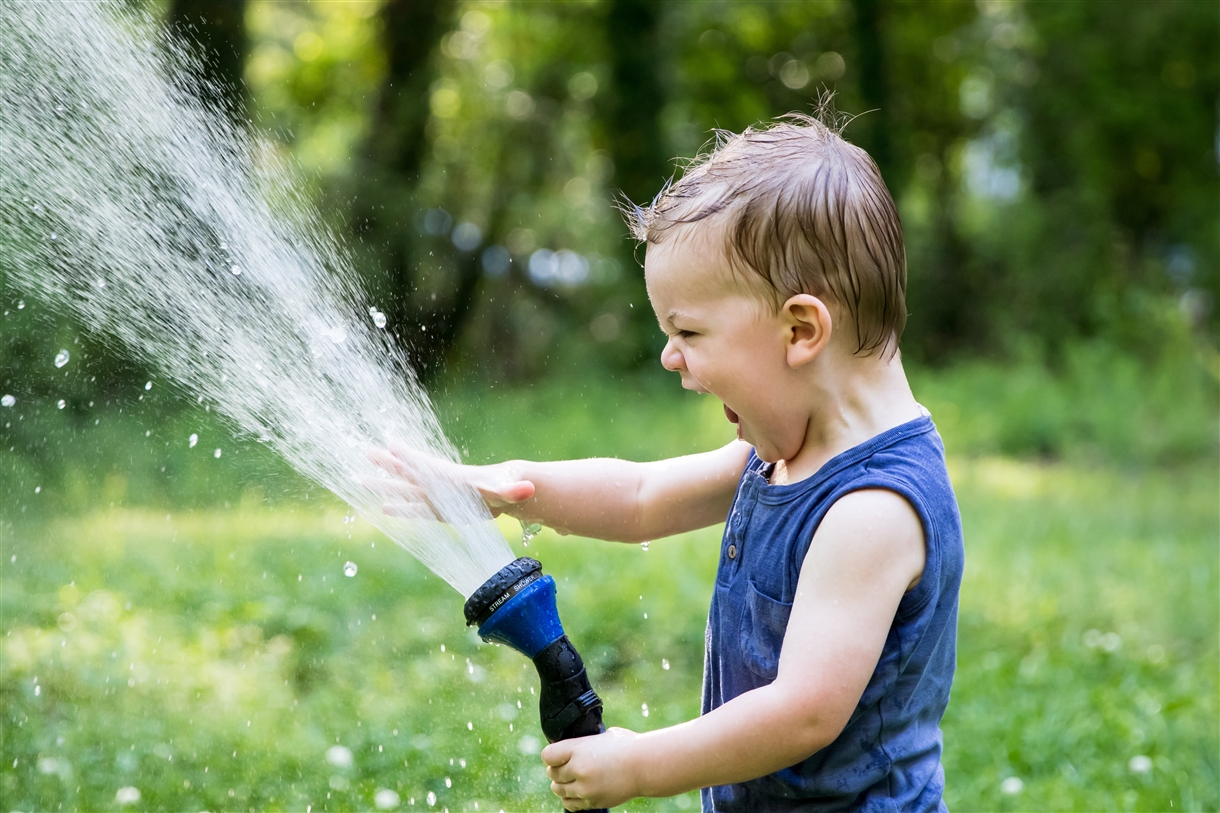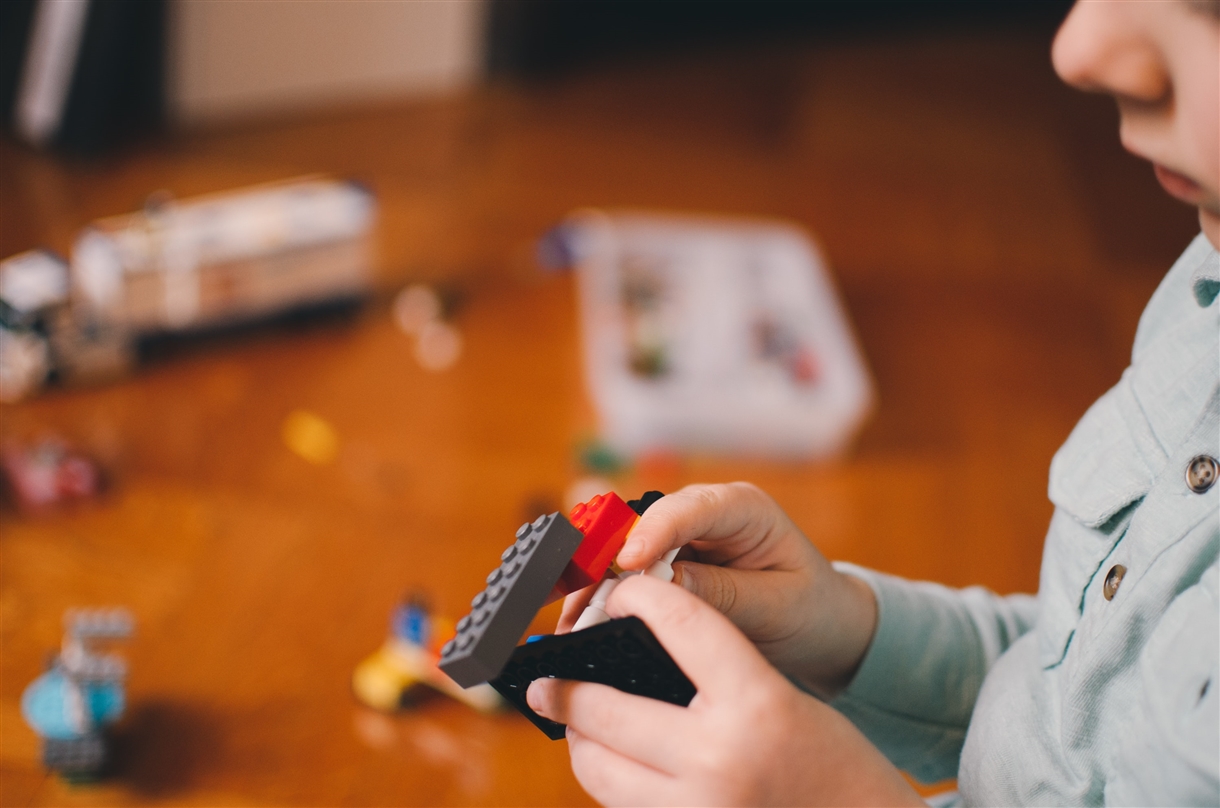Why Is Creativity So Crucial?
"Nurturing creativity is one of the most important things you can do for your child," says Wendy Masi, PhD, dean of the Mailman Segal Institute of Childhood Studies at Nova Southeastern University, in Fort Lauderdale, and author of Toddler Play. New research indicates that a child's imagination quotient (aka "the other IQ") may be a bigger factor in predicting academic success than the more traditional measure of aptitude, her intelligence quotient. "You want your child to be an original thinker, to understand that there isn't always one right answer to every situation," says Dr. Masi.
But that's a tall order for parents. For one thing, schools are increasingly test-driven these days. Even many preschools emphasize academics at the expense of unstructured play. There's also a problem with lots of so-called "educational" toys for young kids. Interactive games that beep when a child provides the right answer may be entertaining, but they don't require the creative input that young kids need to learn. Neither do DVDs designed to teach kids about numbers, letters, or music.
"There is a real risk that we are undermining children's creative potential," says Dimitri Christakis, MD, coauthor of The Elephant in the Living Room: Make Television Work for Your Kids. The American Academy of Pediatrics agrees. It recently issued a report calling for parents to spend more time playing with their kids -- and to focus on simple, old-fashioned toys instead pf high-tech ones.
Blocks
Blocks are widely considered the perfect creative learning toys, since they allow children to build and invent without direction or boundaries. In a recent study at the University of Washington in Seattle, researchers gave families with toddlers a set of wooden blocks and suggestions for "blocktivities" they could do together, such as sorting by size or color. Six months later, the kids with the blocks scored 15 percent higher in a language-development test than a control group of children who didn't have them.
But building toys are just one way to unleash your child's imagination. To raise a creative child, you need to think out of the box yourself.
Be More Adventurous
Schedule downtime. Set aside at least 45 minutes a day for unstructured play with your child, even if it means cutting down on his other activities. Don't set an agenda -- let your child lead you. "Corbin, 6, and Lesha, 2, are much more imaginative when I let them direct the play," says Kaylene Karras, a mom in San Antonio. "I leave out some basic toys and keep an eye on the kids, but I let them develop their own make-believe games."
Be an adventurous family. Spice up dinnertime by serving a new food once a week. Visit a different park in your town instead of the same old playground. Walk the long way home from school, and point out surprising things you see along the way. When you approach the unknown with curiosity and enthusiasm, you'll teach your kids to do the same.
Reinvent everyday objects. Ask your child to help you wash some empty milk cartons. When they're dry, see whether she wants to pile them up to make a fort. Put some dried beans in a bottle and let her use it as a noisemaker. Or make a puppet out of an old sock. Soon your child will start coming up with her own creative play possibilities.
Get out of the house. You don't have to go far to stimulate your child's imagination. Take a barefoot walk across different surfaces -- damp grass, warm sidewalk, dry sand -- and ask him how each one feels (if he's too young, give your own descriptions so he learns to link the words with the sensations). Or go on a treasure hunt in the backyard. Have your little explorer look under leaves and rocks and describe what he finds. Take along a box so he can save his booty for future art or science projects.
Unplug her play. To reduce TV viewing, keep your set in a closed cabinet and stash the remote out of reach. Dial back on the electronic toys too. Basic games are best: Play peekaboo with your baby, and let her bang pots and pans to make music. Cut window flaps in a cardboard box so your toddler can make believe it's a house or a bus. Or put some water in a plastic bin and leave out some washable baby dolls, a towel, and fresh outfits so your preschooler can pretend he's bathing his baby.
Raise a Culture Vulture
Set a silly example. Wear a plastic tiara when you do the laundry or a cowboy hat when you garden. Change your voice and behavior to match the costume. Seeing you having fun will encourage your child to try on different personalities too.
Get together with other kids. By age 2 1/2, your child is ready to play with other kids, not just alongside them. Playdates let him explore his own fantasy world, negotiate for toys and turf, and make friends. Don't plan activities or interfere with his play unless it's really necessary (such as when one child is being too rough).
Expose him to the arts. Taking your toddler to a museum can get him excited about painting or drawing his own masterpiece. And music can provide a creative outlet for a child's emotions. When her son had trouble adjusting to the increased structure of first grade, Ann Debonis noticed that he started spending more time singing and playing his toy guitar. "It helped him cope with the stress," says the mom from Silver Spring, Maryland.
Tell tales. Hearing you read books and make up stories gives your child the tools and inspiration to come up with her own flights of fancy. Use different voices for each character. Once your child knows a tale well, have her invent a new ending. You can also make up a story together -- you start, and have her take over when she's ready.
Shop carefully for a preschool. There's nothing wrong with teaching 4-year-olds the ABCs and 123s. But stay clear of programs in which kids spend most of the day following a set curriculum. "Young kids do best in a play-based learning environment," says David Elkind, PhD, professor of child development at Tufts University and author of The Power of Play. Make sure your child has lots of choices -- such as making art projects, putting together puzzles, and building castles. And ask the teacher about her philosophy -- she should avoid stepping in and suggesting what to do unless a child asks for help.
Teach emotional resilience. When 6-year-old Franny Perl's root-beer float was knocked over by the wind at the beach, her mother, Erica, came up with a new word to describe the event: a floatknocker. "In the end, someone else shared his drink with Franny, but what really cheered her up was using the word 'floatknocker' over and over," says the Washington, D.C., mom. By using humor creatively, Erica showed her daughter how to bounce back from disappointment.
Take toys to the park. Playgrounds are great for getting your kids exercise, but they don't always have the tools to spark their imagination. Pack colored chalk for drawing, soap bubbles for blowing, and sand toys for sharing. You might also include face paint, so you can transform your child into his favorite animal and have him act out the part.
Nurture your little artist. Set aside an area where your child can draw, paint, and sculpt whenever she wants. Beth Lerman turned part of her garage into an art studio when her daughter turned 3. "There's a big workbench with paint, rolls of white paper, glitter, glue sticks, brushes, chalk, markers, crayons, and other supplies," says the Dallas mom. "It's Jamie's favorite place, because she can be creative and make a mess."
Terrific Learning Toys
Want your child to get the most out of playtime? Keep out just a few toys at once, and rotate them regularly so that old ones seem new again. "Kids get overwhelmed by too much choice," says Dr. Elkind. "It prevents them from exploring all the ways they can play with one object." Avoid battery-operated toys that turn your child into an observer. Instead, give him things that allow him to direct the play.
Blocks. The only limits to your child's creations: her stacking skills and her imagination. Blocks also lay the foundation for math, science, and spatial skills.
Little instruments. Your child will love trying out a drum, a xylophone, bells, and maracas. Watch out for toys that play tunes at the push of a button -- your child should be the one creating the noise.
Dress-up clothes. Keep a box of costumes, old clothing, and props (scarves, capes, foam swords, eye patches, hats) handy so your kids can try out new roles.
Modeling clay. Set up a work space with a toy rolling pin and a blunt plastic knife your child can use to flatten, cut, and shape the clay.
Art supplies. Stock your house with crayons, markers, stamp pads, paper, paints, and glue. Put big sheets of newspaper on the floor to contain the mess.
A tool set. Your child can hammer and saw to her heart's content. She'll also like a doctor's kit or a picnic basket with pretend food.
A magnifying glass. Kids can get a close-up look at everything from bugs to their own fingernails.
Plastic cups for the bath. Use different sizes so that when your child pours water from one cup to another, she learns the concept of more and less.



